Manufacturing (excludes F&B), Government, Sustainability:
On this page
Summary
- The European Union’s (EU) Carbon Border Adjustment Mechanism (CBAM) Regulation is approaching the initial stages of its implementation.
- The CBAM will apply a carbon levy to certain products in the cement, iron and steel, aluminium, fertilisers, hydrogen and electricity sectors when these products are imported into the EU.
- The CBAM will enter into force in a ‘transitional phase’ from 1 October 2023. This phase will involve the introduction of data collection and reporting obligations for embedded carbon emissions in products that are in scope of the regulation.
- From 1 January 2026, the CBAM will enter its ‘definitive phase’, whereby producers will be required to pay a levy on the direct and indirect emissions embedded in these products. The price of the levy will be set in accordance with the charges facing EU producers under the EU Emissions Trade System (ETS).
- The EU has published guidance documents for producers located outside the EU(external link), as well as an optional communication template(external link) for the exchange of information between importers and operators of installations. A series of webinars, beginning 15 September, has also been scheduled for each CBAM sector.
- The CBAM is part of a broader EU plan to reduce greenhouse gas emissions by 55% by 2030, and become climate neutral by 2050.
- NZTE have developed guidance for affected exporters, which can be found here(external link).
Report
The EU’s Carbon Border Adjustment Mechanism (CBAM)(external link), initially proposed in June 2021 and formally adopted in May 2023, is designed to measure embedded emissions, reduce ‘carbon leakage’, and impose a levy on certain carbon-intensive goods (iron, steel, aluminium, cement, fertilisers, hydrogen, and electricity) and selected precursor materials which are imported into the EU.
From 1 October 2023 to 31 December 2025, the CBAM will operate in a transitional phase. The final version of the Implementing Regulation for the transitional phase(external link) and Annexes(external link) have now been published. During this period, third country producers will be required to calculate and collect information on the direct and indirect embedded emissions in their products. EU importers (‘Declarants’) will then be responsible for submitting this information to relevant EU Member States’ authorities. The European Commission (the EU’s executive body) will collate, assess, monitor and report on the cumulative data received.
Throughout the transitional phase, the Commission will provide training, guidance, information templates, a dedicated online portal, and IT registry to support producers in implementing CBAM. Guidance documents for producers located outside the EU have already been released (link(external link)), as well as an optional communication template(external link) for the exchange of information between importers and producers. Furthermore, a series of webinars, beginning 15 September, will be held covering each CBAM sector (the webinars will also be recorded and uploaded to the Customs & Tax EU Learning Portal(external link)). The schedule and registration information can be found here(external link).
The information that will be required under the CBAM Implementing Act is informed by the EU ETS Guidance(external link), as well as the Monitoring, Reporting and Verification (MRV) Regulation(external link). During the transitional period, this information will include: the total quantity of goods imported in the preceding quarter; total embedded direct and indirect emissions in those goods; and the carbon price due in the country of origin for the embedded emissions. From 1 January 2025 onwards, CBAM Declarations must also verify emissions data, outline the total number of CBAM Certificates to be surrendered, and include information on the carbon price paid in the country of origin.
Third country producers will therefore be required to monitor and collect data on the embedded emissions in their products, and communicate this to their EU importer. It is possible to use templates and guidance documents provided by the Commission for this purpose, and no verification of emissions data will be required during the transitional phase. Until 31 December 2024, companies will also be granted some flexibility with respect to the reporting methodology used. They will be able to develop CBAM reports on the basis of the method outlined by the Commission, equivalent third country systems, or default values for embedded emissions. From 1 January 2025, only the EU’s approved methodology will be permitted.
At the end of 2025, the European Commission will produce a report containing the lessons learned from the transitional period. Commission officials have made it clear that this may involve an expansion of the scope of CBAM to cover additional sectors. One key indication of precisely which products may be included in a revised CBAM lies in the EU ETS, which is progressively expanding in line with the Fit for 55(external link). The EU claims the CBAM is compatible with WTO rules, because it will mirror the EU ETS.
Next steps
Further details on implementation for the definitive phase of the CBAM will be released progressively from the end of 2024. This future implementing legislation will provide the basis for the ‘definitive’ phase of CBAM from 1 January 2026.
Further information on the CBAM Regulation can be found on the European Commission website here(external link), and guidance for New Zealand exporters can be found on the NZTE website here(external link).
More reports
View full list of market reports(external link)
If you would like to request a topic for reporting please email exports@mfat.net
Sign up for email alerts
To get email alerts when new reports are published, go to our subscription page(external link)
Learn more about exporting to this market
New Zealand Trade & Enterprise’s comprehensive market guides(external link) cover export regulations, business culture, market-entry strategies and more.
Disclaimer
This information released in this report aligns with the provisions of the Official Information Act 1982. The opinions and analysis expressed in this report are the author’s own and do not necessarily reflect the views or official policy position of the New Zealand Government. The Ministry of Foreign Affairs and Trade and the New Zealand Government take no responsibility for the accuracy of this report.

